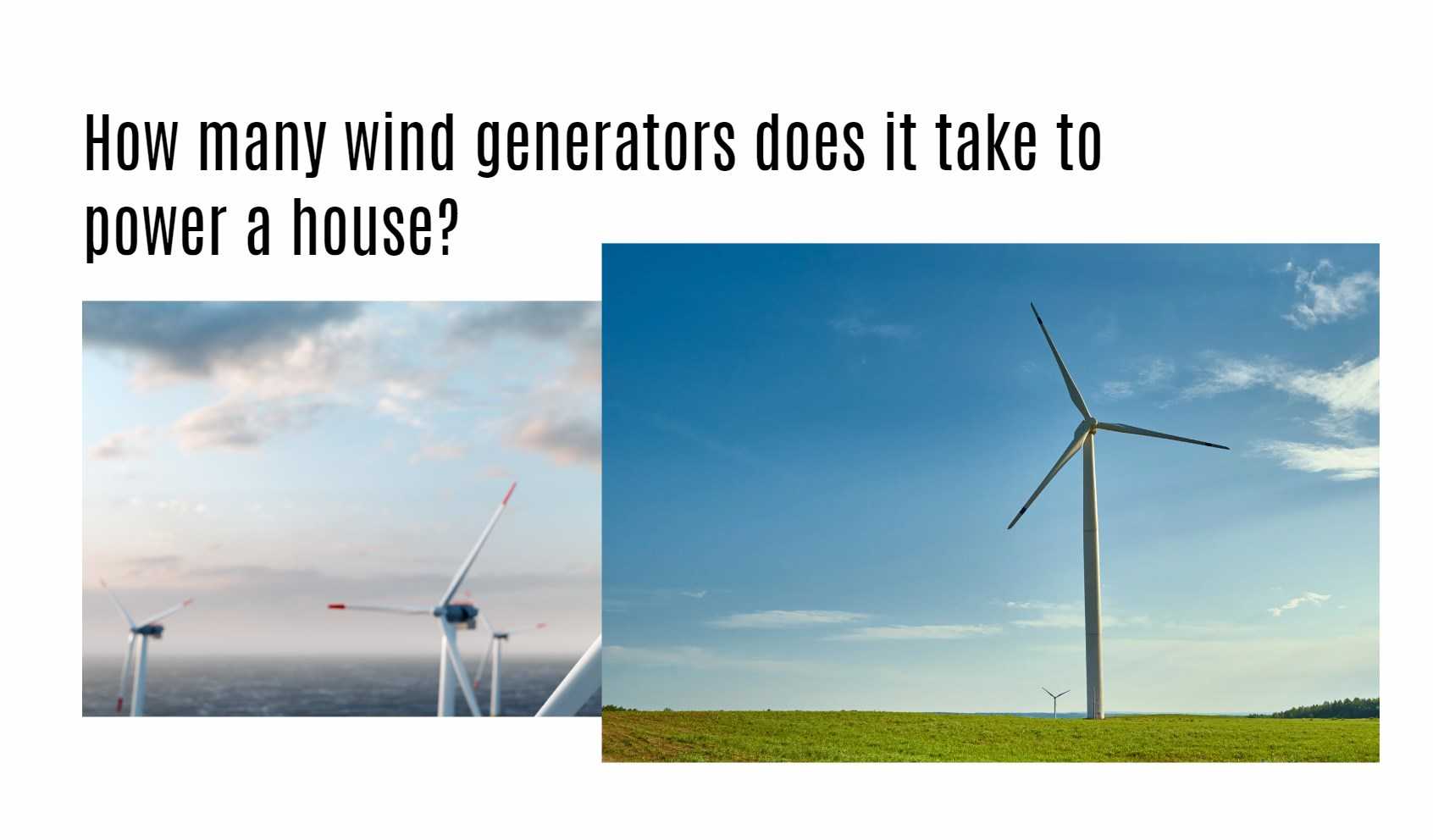Harnessing the power of nature to fuel our homes is not just a futuristic dream; it’s a reality that many homeowners are embracing. In this day and age where sustainability is key, wind generators have emerged as a popular source of renewable energy. But how many wind generators does it actually take to power a house? Let’s dive into the world of wind energy and find out!
Understanding Power Consumption of a House
When it comes to understanding the power consumption of a house, it’s essential to consider various factors that influence energy usage. Appliances like refrigerators, air conditioners, and water heaters can significantly impact electricity consumption. Additionally, the size of the house and the number of occupants play a role in determining how much energy is needed on a daily basis.
Lighting also contributes to power usage; switching to LED bulbs can help reduce electricity consumption. Monitoring energy usage patterns throughout the day can provide insight into peak hours when more electricity is being utilized. Being mindful of standby power from devices left plugged in can make a difference in overall energy efficiency.
By comprehending what drives power consumption within a household, individuals can make informed decisions on ways to optimize their energy usage and potentially reduce their reliance on traditional sources of electricity.
Factors Affecting the Number of Wind Generators Needed
When considering the number of wind generators needed to power a house, several factors come into play. The location of your home plays a significant role in determining how many wind turbines are required. Areas with consistent strong winds will require fewer turbines compared to regions with variable or low wind speeds.
The energy consumption of your household is another crucial factor. A larger home with high electricity usage will need more wind generators to meet its power needs efficiently. Additionally, the efficiency and capacity of the chosen wind turbine model will impact how many units are necessary for powering your residence.
Moreover, the size and design of your property can influence the placement and effectiveness of wind turbines. Tall buildings or dense foliage may obstruct airflow, affecting the performance of the generators. It’s essential to assess these elements when determining the optimal number of wind turbines needed for your home’s energy requirements.
Calculating the Required Number of Wind Generators for a House
When it comes to determining how many wind generators are needed to power a house, several factors come into play. The average power consumption of the household is crucial. This includes considering the number of occupants, appliances used, and daily energy usage patterns.
Another important factor is the wind speed in the area where the wind generators will be installed. Higher wind speeds mean more electricity production. Additionally, the size and efficiency of the wind generator itself play a significant role in calculating how many units are required.
To calculate the exact number of wind generators needed for a house, you can use online calculators or consult with renewable energy experts who can provide tailored advice based on your specific needs and location.
By accurately determining the required number of wind generators for your home, you can maximize energy production while reducing reliance on traditional power sources. This not only helps in saving money but also contributes positively to environmental conservation efforts.

Benefits of Using Wind Power for Homes
Utilizing wind power for homes brings a myriad of benefits that extend beyond just saving money on electricity bills. By harnessing the power of the wind, homeowners can significantly reduce their carbon footprint and contribute to a cleaner environment.
One major advantage of using wind generators is the ability to generate electricity even when the sun isn’t shining, making it a reliable source of renewable energy. This independence from traditional grid systems also provides homeowners with greater control over their energy production and consumption.
Moreover, installing wind generators can increase property value and appeal to eco-conscious buyers in the real estate market. It not only showcases your commitment to sustainable living but also offers long-term savings on energy costs.
Additionally, relying on wind power promotes energy security by diversifying your household’s energy sources and reducing dependency on fossil fuels. Embracing this clean energy alternative not only benefits individual homeowners but also contributes towards building a greener future for all.
Challenges and Considerations for Installing Wind Generators
When it comes to installing wind generators for your home, there are a few challenges and considerations to keep in mind.
Location plays a crucial role in the effectiveness of wind power generation. You need to ensure that your property has enough consistent wind flow to make the investment worthwhile.
Additionally, zoning regulations and homeowner association rules may restrict where you can place your wind generator. It’s essential to check local guidelines before proceeding with installation.
Maintenance is another factor to consider. Wind generators require regular upkeep to ensure optimal performance and longevity. Factor in maintenance costs when budgeting for your renewable energy project.
The initial cost of purchasing and installing a wind generator can be significant. While there are long-term savings on energy bills, it’s essential to weigh the upfront investment against potential savings over time.
Conclusion
Wind power is a sustainable and efficient energy source that can effectively power homes while reducing the dependence on non-renewable resources. By understanding your household’s power consumption, calculating the number of wind generators needed, and considering the benefits and challenges of installing them, you can make an informed decision to harness the power of wind for a greener future. Embracing renewable energy like wind power not only reduces your carbon footprint but also contributes to a more environmentally friendly world for generations to come.




